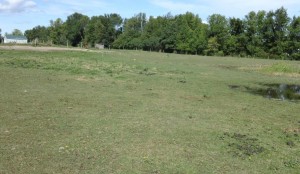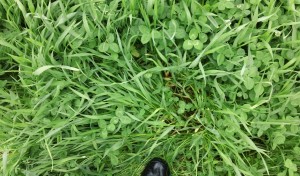By Kimberly Hagen
Grazing Specialist
UVM Center for Sustainable Agriculture
What’s in a crisis? Almost always there is a lesson to be learned. The trick is to pay attention, or make the observation about what is going on and make the necessary changes to move forward in a positive way. It could mean some slow slogging for a while to move out of the present situation, but it’s often the best, and sometimes the only, way out.
All too often when I am called to a farm, it is in a state of crisis. They might not realize it, but I can see
it. As a grazing specialist my eyes are trained on the status of the past, present and future of the livestock’s feed on that farm. So many times- by the time a farm has been recommended to me or a farmer has called me for a consultation, it’s because they’ve hit a hard place and not sure where to make the next move, except for one that has no immediate cost to it. Unfortunately there is a cost, it’s just not always so obvious.
So what I am talking about here is pasture, of course. The most common practice, and this has been the case for more than a few generations, (in most parts of the world ) is to let your animals out of the barn onto THE pasture – the same one, day after day. Sometimes there are two, a night pasture and a day pasture, but still basically a continuously grazed piece of land.
So what happens? Well, the season starts out with promising lush growth, the animals graze and graze on that early spring/summer forage that bolts out of the starting gate racing to the sun. Milk production is high and other livestock pack on the pounds getting fat and glossy. But then the days get hotter and drier, and the forage slows way down. But still the animals graze and graze, and since the forage is not so plentiful, they scrounge, biting down on the same plants again and again, getting closer and closer to the ground. By early August, the pasture is nothing more than a holding pen and exercise yard, and completely void as a functioning viable part of the feed program.
The greater the fertility in your soil, the longer you can hang on with this practice, but it eventually catches up. The plants turn into mini-versions of themselves and, lacking the energy or reserves to replenish, remain stunted in their growth. At this point the choices narrow quickly – any feed already harvested could be fed out, but that leaves nothing for the coming winter months. Purchased feed could be fed – but that has a price on it. Pasture could be rented at another farm – but that also has a price, including the inconvenience of transporting animals either by walking or by trucking. Not great choices by any stretch of the imagination. Animals can be culled, which will lower the feed costs, but might not be in the long term interests of the farm. An immediate fix will probably require some combination of all three options. But none of these options is a long term answer, and will become increasingly expensive as a management practice if repeated numerous times. The window where the pasture actually contributes substantially to the feed intake of the animal will decrease over time and depending on the circumstances, within a few years, may find that grazing is finished by the end of July or even June.
There is another choice – changing the grazing management – but it will not provide a quick fix, like the other options mentioned and here is the slow slog I was referring to earlier. As Allan Savory has so eloquently written – and spoken about as well – after his years of observing how it all works in the wild, observation is the key. This is not something you do once and are finished, but an ongoing deep conversation and connection with the animals and plants on your farm.
Good grazing management – as a colleague wrote a few years ago in a wonderful paper- is both art and science. It requires developing strong observation skills by walking through your pastures, observing how your animals graze, and how the plants are responding to being grazed. You really should get down on your hands and knees, push the plants aside and see how much bare ground there is between plants, how many insects there are, how much worm and beetle activity around the manure patties/pellets. How does it all work? Or for that matter, is it working? We have all heard from the master teachers – Savory, Ian Mitchell-Innes and many others – but there’s really no replacing the practice of observing what is going on with your animals, your forage, your pastures, and knowing about your soil and making note of how it all works together in your corner of the world. All of this requires a silo’s worth of patience and more, but the rewards are well worth the wait. And the funny thing is, you might find that all those jokes about how to lose a million dollars – “just keep farming”…..don’t really apply any more.
3/19/14 update: The paper referenced above, by Sarah Flack, is available at her web site: www.sarahflackconsulting.com, as well as many other articles and videos to help you achieve better grazing.




Recent Comments